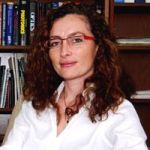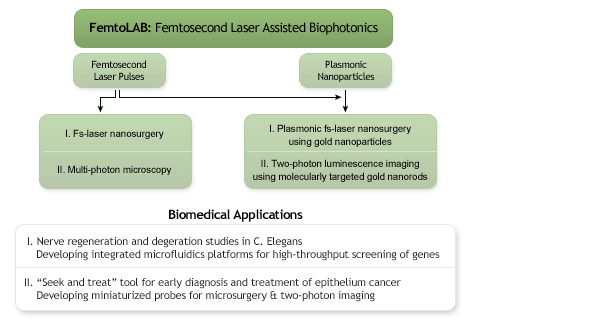
Education
| 12/2000 |
Ph.D. in Mechanical Engineering, Stanford University |
| 02/1995 |
M.Sc. in Aerospace Engineering, Technion, Israel Institute of Technology
|
| 02/1992 |
B.Sc. (Cum Laude) in Aerospace Engineering, Technion, Israel Institute of Technology
|
Professional Experience
| 2010 - Present |
Associate Professor |
Mechanical Engineering Department, The University of Texas at Austin, TX |
| 2004 - 2010 |
Assistant Professor |
Mechanical Engineering Department, The University of Texas at Austin, TX |
| 2009 - Present |
Faculty Fellow |
Institute for Cellular and Molecular Biology, The University of Texas at Austin, TX (2009 - present). |
2005 - Present
|
Graduate Student Council Member |
Biomedical Engineering Department, The University of Texas at Austin, TX |
2005 - Present
|
Faculty Fellow
|
Institute for Neuroscience, The University of Texas at Austin, TX |
| 02/2002 -06/2002 |
Visiting Scientist |
Visiting Postdoc in the Division of Engineering and Applied Sciences, Harvard University |
09/2000 - 09/2004
|
Postdoctoral Research Fellow
|
Applied Physics Department, Stanford University, Stanford, CA with Robert L. Byer |
09/1995 - 09/2000
|
Graduate Research Assistant
|
Mechanical Engineering Department, Stanford University, Stanford, CA with Ronald K. Hanson |
| 02/1992 - 05/1995 |
Graduate Research/Teaching Assistant |
Aerospace Engineering Department, Technion - Israel Institute of Technology, with Alon Gany and Beny Natan |
Honors and Awards
- Keynote Speaker at the Royal Society International Scientific Seminar Meeting on the Topic "Making Light Deliver: Optical Nanosurgery for Targeted Drug Delivery," London, UK (June 2010).
- Highlighted Article: Paper # 20 on "thermal analysis of gold nanorods heated with femtosecond laser pulses," published in the Journal of Physics D: Applied Physics in 2008, was selected as one of the 30 highlighted articles (out of the about 400 articles) published in 2008.
- Keynote Speaker at the 5th International Conference on Microtechnologies in Medicine and Biology, Quebec City, Canada (April 2009).
- NSF Career Award (2009-2014).
- Plenary Talk at the opening session of Focus on Microscopy, Osaka, Japan (April 2008).
- Highlighted Article: Paper # 12 on "Two-photon imaging of cancer cells using bio-conjugated gold nanorods" was featured as "Hot Paper" for being one of the most-cited articles published in Nano Letters in 2007.
- Highlighted Article: Paper # 11 on "Thermal and fluid processes of a thin melt zone during femtosecond laser ablation of glass: the formation of rims by single laser pulses," published in the Journal of Physics D: Applied Physics in 2007, was selected as one of the 30 highlighted articles (out of the about 400 articles) published in 2007.
- Honored as one of the Rising Stars of Texas at the Nano Summit Research Conference, Texas A&M University; TX (August 2007).
- Summer Research Award from the University of Texas at Austin (2005).
As an undergraduate and graduate student:
- First Place in the Ground Testing Technical Committee Student Contest, AIAA, awarded for the best graduate project in competition (1998).
- Fulbright Graduate Student Scholarship (1995-97).
- Zonta Amelia Earhart Award for Aeronautics Research (1995-97).
- Gold Medal for the Best Graduate Student Paper, 45th IAFC (1994).
- Ehud Ben-Amitay Student Research Award, Negev University, Israel (1994).
- President's Honor List, Technion, Israel (1992).
Research Interests


My research focuses on the creation of novel laser surgery and imaging technologies with high precision. In my group, we achieve this goal by exploiting the nonlinear interaction between femtosecond laser pulses and tissue as a precise ablation tool for surgery as well as a three-dimensional probing tool for imaging. We further improve the capabilities of these tools by using the nanoscale focusing power of plasmonic gold nanoparticles.
We aim at advancing both biological sciences and clinical practice. To advance biological sciences, for example, we develop novel microfluidic devices for high throughout nanosurgery. To improve clinical practice, for example, we engineer new microsurgery instrumentation. Our research problems range from understanding the biological mechanisms of nerve regeneration and degeneration after injury in model organisms to developing novel non-invasive optical tools for treatment and diagnosis of cancer.
- Femtosecond laser microsurgery: Optical-scissors applicable at the sub-cellular and cellular level with application to nerve regeneration and cancer treatment. We perform both experimental and theoretical research to elucidate the fundamentals of fs-laser interaction with tissue and the physical processes involved during ablation (such as laser-induced cavitation bubble dynamics, extent of the laser-induced photo-damage, plasma shielding during surgery with low NA-lenses, laser-induced heating of gold nanoparticles in tissue, etc.).
- High-throughput microfluidic devices for studying nerve regeneration and degeneration: Development of new microfluidic devices for studying the dynamic processes involved in nerve regeneration and degeneration of C. elegans and for enabling automated high throughput genetic and pharmacological screenings.
- Miniaturized handheld probes for fs-laser microsurgery: Development of miniaturized endoscopic probes for fs-laser microsurgery guided by two-photon imaging, utilizing optical MEMS scanning mirrors and photonic crystal fibers.
- Plasmonic laser nanosurgery using molecularly targeted gold nanoparticles: Fundamental study of laser nanoablation of biological materials based on laser-field enhancement near gold nanoparticles. The delivery of nanoparticles to biomarkers of interest allows for the removal of tissue in large areas using single laser pulses while ablation localized near nanoparticles improves the precision of the surgery at the nanoscopic levels.
- Two-photon luminescence imaging using molecularly targeted gold nanorods: Development of a new multi-photon imaging modality using the bright luminescence properties of gold nanorods to increase imaging depth of highly scattered tissue for early cancer detection. We found that two photon luminescence of gold nanorod labeled cells is 3000 times brighter than the autofluorescence of unlabelled cells.
|






